The Sapling’s own co-editor Thalia Kehoe Rowden has just had her first picture book published by Scholastic – Rugby 1 2 3 / Whutupōro Tahi Rua Toru, a rollicking rhyming and counting tale set in and around a classic kiwi rugby match. Thalia shares with us the journey she took to get from kernel of an idea to a glorious real book, on shelves everywhere!
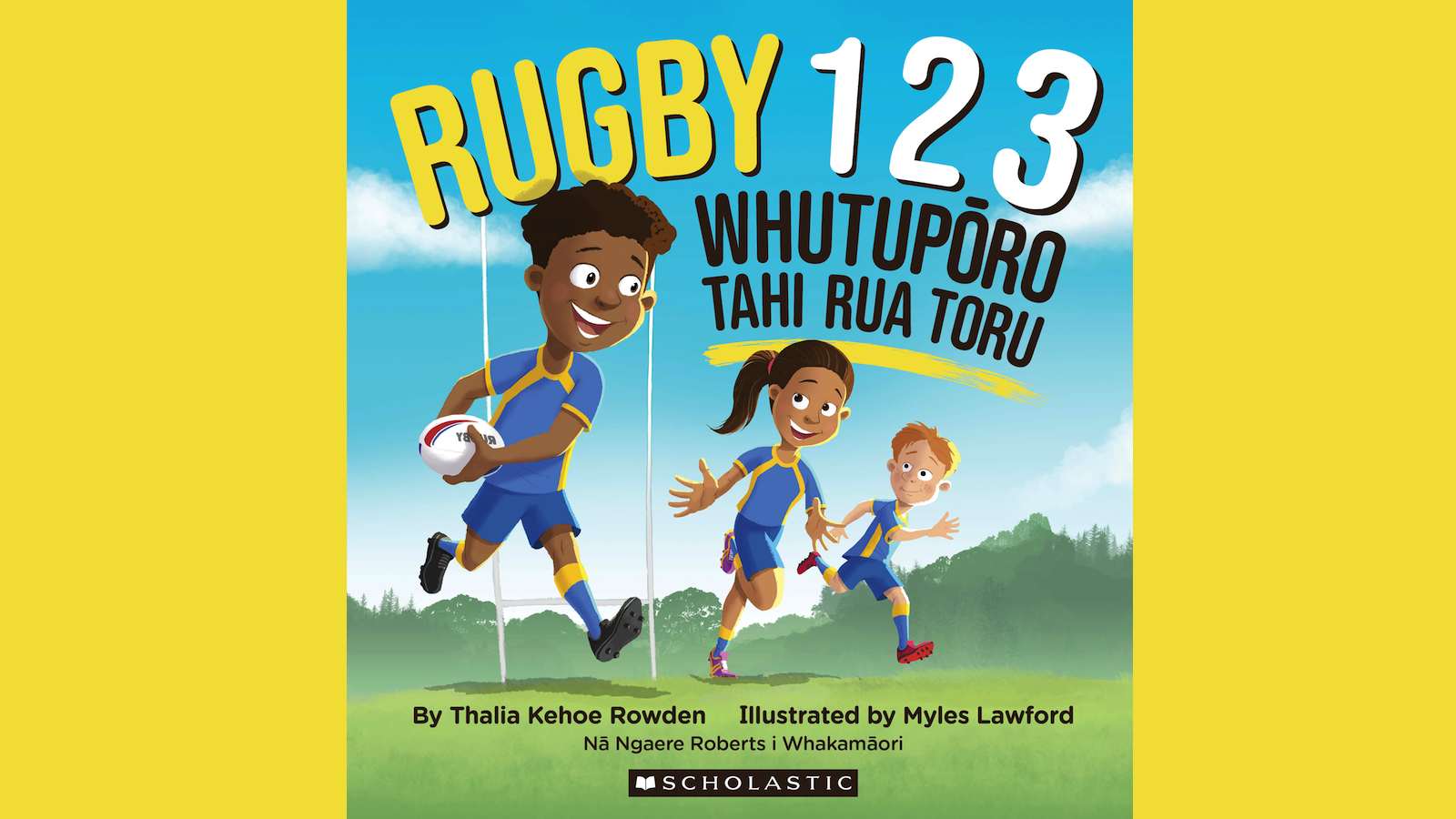
First: the why
I grew up in a quoting family, where there was a song lyric or book quote for every occasion. It was only in my late thirties that I learned ‘gnu’ has a silent ‘g’: the Flanders and Swann song about the ‘g-nicest work of g-nature in the zoo’ had displaced the real pronunciation long ago in our household.
Our quirky grey cat, Echo, regularly cued someone to note, ‘but my cat likes to hide in boxes’, and we would often emphasise a position with, ‘I meant what I said, and I said what I meant/an elephant’s faithful, one hundred percent!’
We all need gnus, cats, and elephants, but the way picture books seep into family conversation is one reason I’m deeply committed to making sure all kinds of kids see themselves in their books. That’s why I love being one of the editors of The Sapling, advocating for young readers, and it’s why I am now writing books, too.
The vast majority of picture books star pale-skinned children. In a recent US survey, the next biggest group was animals. Then children of colour.
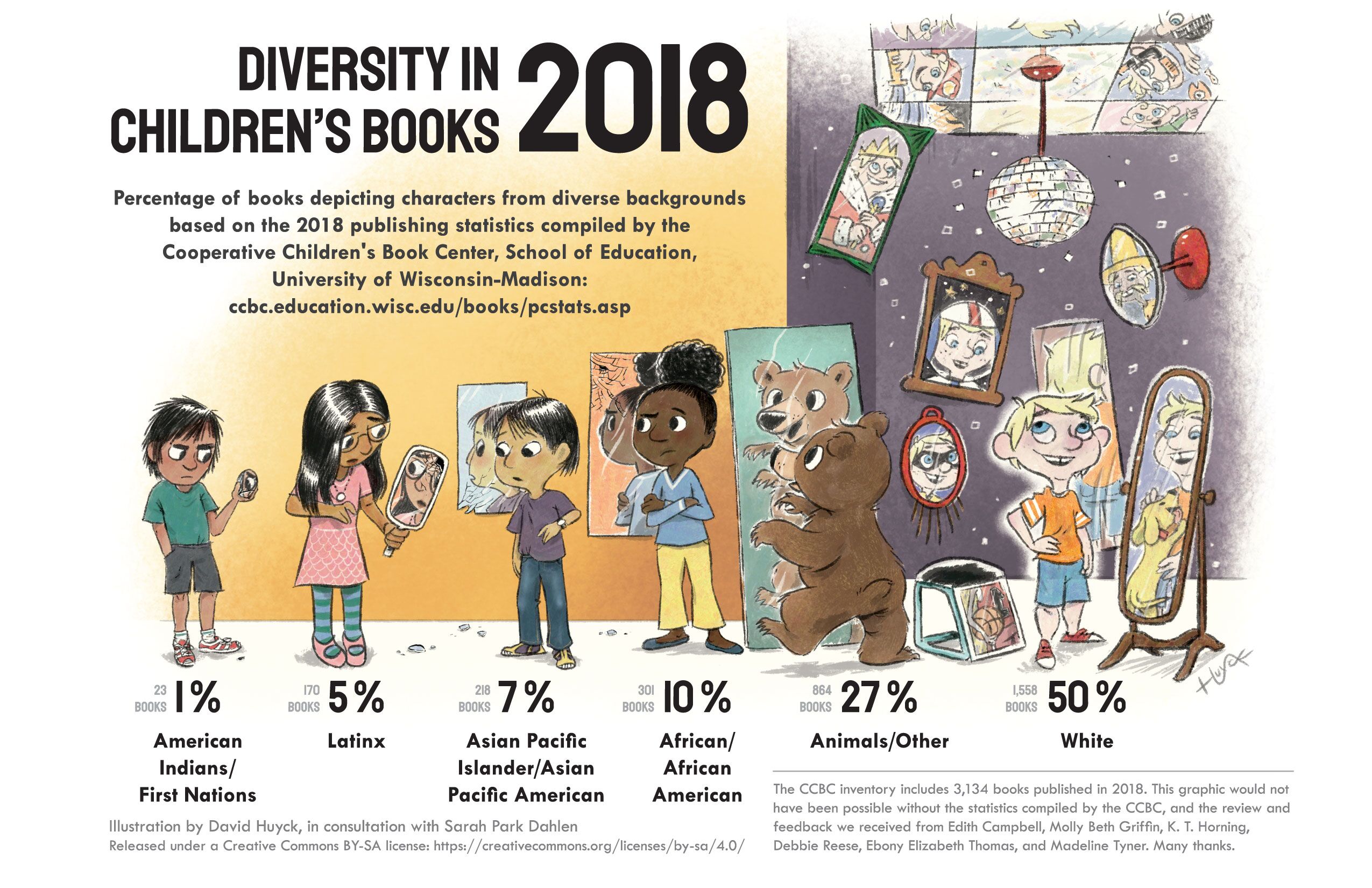
The situation is slowly improving, and publishers are producing more books with a wider range of people, but we still have a very long way to go. Neurodiverse kids, rainbow families, disabled children: they’re virtually non-existent in children’s publishing.
The huge size of the book markets in the United States and United Kingdom means that kids with African heritage are becoming better served by publishers in those places. But Māori and Pasifika kids don’t have a huge profile in America or Britain, so the New Zealand publishing industry has a special role in making sure our tamariki and rangatahi can see themselves and their communities in the books they read. More about that in a minute.
…the New Zealand publishing industry has a special role in making sure our tamariki and rangatahi can see themselves and their communities in the books they read.
Here’s another constituency that misses out: sporty kids in Aotearoa, especially if they’re part of Pasifika or Māori families.
The late, wise John McIntyre, co-founder of The Children’s Bookshop in Kilbirnie, often lamented the lack of children’s books with rugby themes, when so many people came into the shop looking for one.
It’s that, rather than a passion for rugby, that drove this book, my first published manuscript.
The journey to publication
May 2017: a manuscript emerges
A couple of years ago I surprised myself by starting to write picture book manuscripts.
The second one I ever wrote was a rhyming, rugby-themed counting book, responding to a thread in the Feminist Mothers Aotearoa Facebook group, where mamas were lamenting the lack of positive books about rugby for kids, and particularly any featuring girls. One mum had talked to New Zealand Rugby about it, and passed on encouragement to the group: they’d love to see these books published, too, and would be keen to talk to anyone who wrote one.
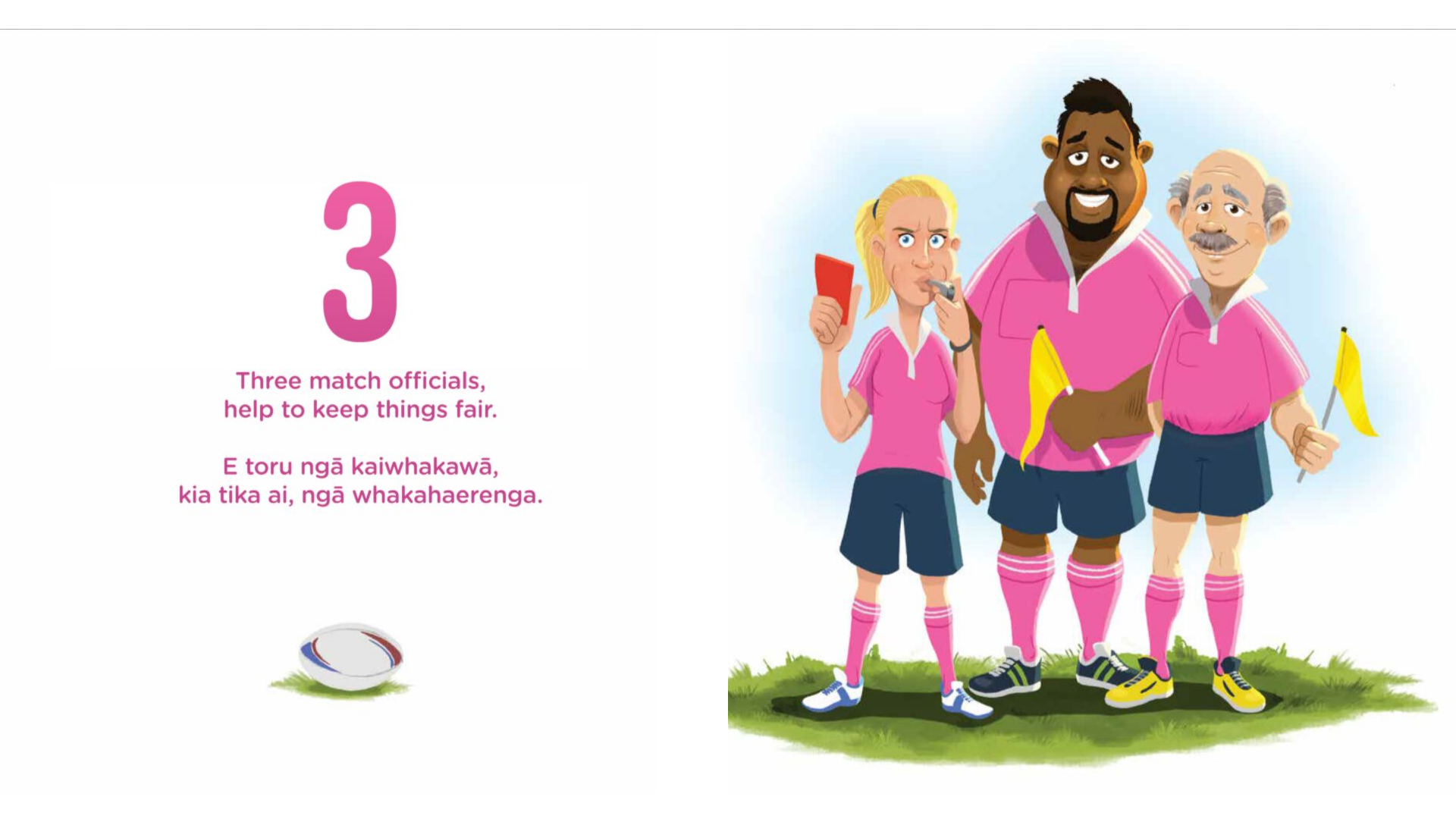
Doggerel has always been a strong suit in my family (my Dad still writes us all rhyming birthday cards), and lying in bed one sleep-deprived, cluster-feeding night, I started a rugby poem in my head:
One brown rugby ball, to kick and catch and pass
Two boots, laced up tight, with sprigs to grip the grass
(The editing process changed those opening lines slightly – more about that later.)
A few days later I ran my finished manuscript past several other people, who had good suggestions about shaping it up. Then I took it to the Storylines Hui in Auckland, and showed it to two publishers at the 3-minutes-per-person Pitch Slam.
September 2017: Pitching!
One editor took it to the company’s acquisition meeting, but decided not to proceed. The other liked it, but said they had a rugby book in the calendar already, so not right now.
I read lots of publishing advice online and decided this was encouraging, rather than a failure, in what is often a long road to publication. I kept writing and pitching. I now have a collection of a dozen finished picture book manuscripts waiting to find their forever homes.
I kept writing and pitching. I now have a collection of a dozen finished picture book manuscripts waiting to find their forever homes.
April 2018: Going an alternative route
Months later, a friend in my writing group put me in touch with someone she knew who had started working on product licensing for New Zealand Rugby. That person passed me on to her colleague, who – drum roll! – wanted to see my book published, and started calling people in the book world.
May 2018: Scholastic says yes!
And now the timing was right! Scholastic’s acquisition team said yes, and we prepared to publish a new rugby picture book in time for the Rugby World Cup in 2019. Ultimately, we didn’t go ahead with a formal licensing arrangement (so there’s no All Blacks logo on the finished book, for instance), but the interest and encouragement from New Zealand Rugby helped get the book manuscript back in front of publishers. I hope they’ll be pleased this book exists, with or without the logo.
October-December 2018: editing and illustrating
When the go-ahead came, in late 2018, things moved fast with the lovely Scholastic editing team, Penny Scown, Lynette Evans, and Nicky Van Aardt.
We finalised the text, with Penny bringing her rugby knowledge and eye for detail, for instance changing the (outdated) brown ball to a (current and accurate) white ball in the first line. Moments after we agreed on the line edits, the team approached Myles Lawford to illustrate the book, and he produced roughs almost immediately. I was astonished at the speed.
Side-note: the importance of the cover letter
This is where we get back to the why. I’m not a rugby super-fan by any means. I wrote this book for kids who are.
I said, in my very first cover letter and pitch at the 2017 Pitch Slam, that I wanted to produce a book that was very broadly representative in illustrations, including all kinds of kids. I emphasised this, repeatedly. I knew (from all those publishing blogs) that once I submitted the manuscript, the illustration would be largely – perhaps entirely – out of my hands. So I made sure I was clear, up front, that inclusive illustration was the most important thing to me
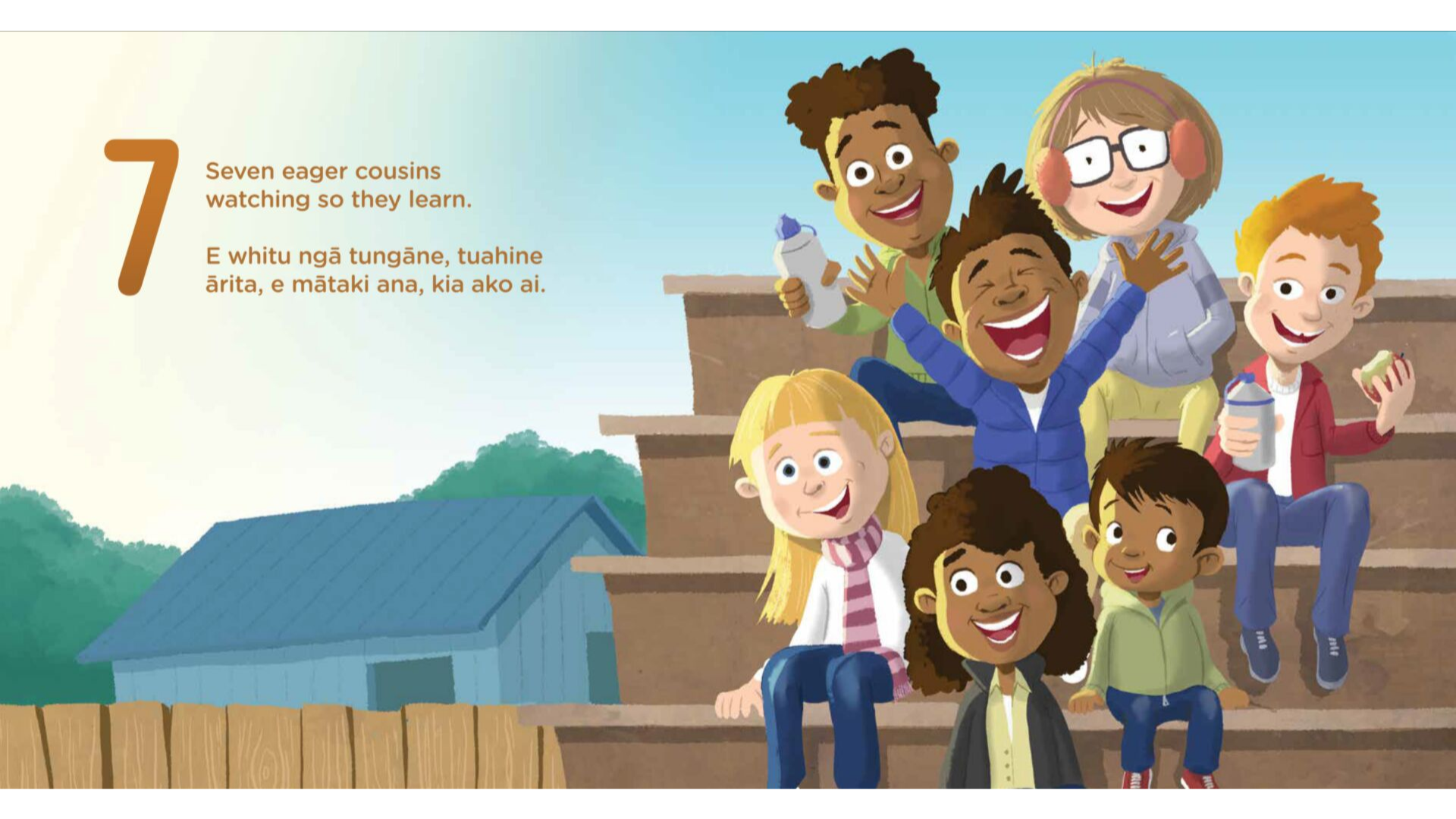
Penny and Lynette at Scholastic were right on board with that, and Myles has done a beautiful job of showing a range of New Zealand kids and their families having a great time at the footy. We all went back and forth on details in the images – Penny again making sure we were accurate in all sorts of minutiae – and I passed on ideas for hairstyles and smiles.
In the finished book, there’s a neurodiverse kid wearing earmuffs to help with the sensory overload of being in a crowd (and he’s enjoying himself). There are more brown faces than white. There are lots of girls and women playing, watching, and refereeing the game. Kids are the focus, but they’re surrounded by supportive adults. It’s not the case that every single child in Aotearoa can see themselves in this small book, but a lot of them sure can.
March 2019: translation
Then came another wonderful surprise. After a pause in proceedings, Penny emailed to check the final text, so it could be sent for translation into te reo Māori. I’d had no idea the book would be translated, and I’m so delighted it has been, by the prolific and accomplished reo Māori translator Ngaere Roberts.
The Māori text appears in the same font, the same size, on the same page or spread as the English version, so readers can choose which language to read, or read both. I’ve learned a lot more kupu and grammar in te reo Māori by following along the alternating lines.
1 September 2019: Rugby 123/Whutupōro Tahi Rua Toru hits the bookshelves!
From composing the poem in my head to seeing the book in my hands, it’s been a more than two-year journey.
It takes a lot of people, and a lot of time, to publish a book. From my friends and family who made me a reader and a writer, to the parents, teachers, librarians, booksellers, and Saplings who advocate for more inclusive books on our shelves, and then to the team at Scholastic who have been lovely to work with: publishing is a team effort, for sure.
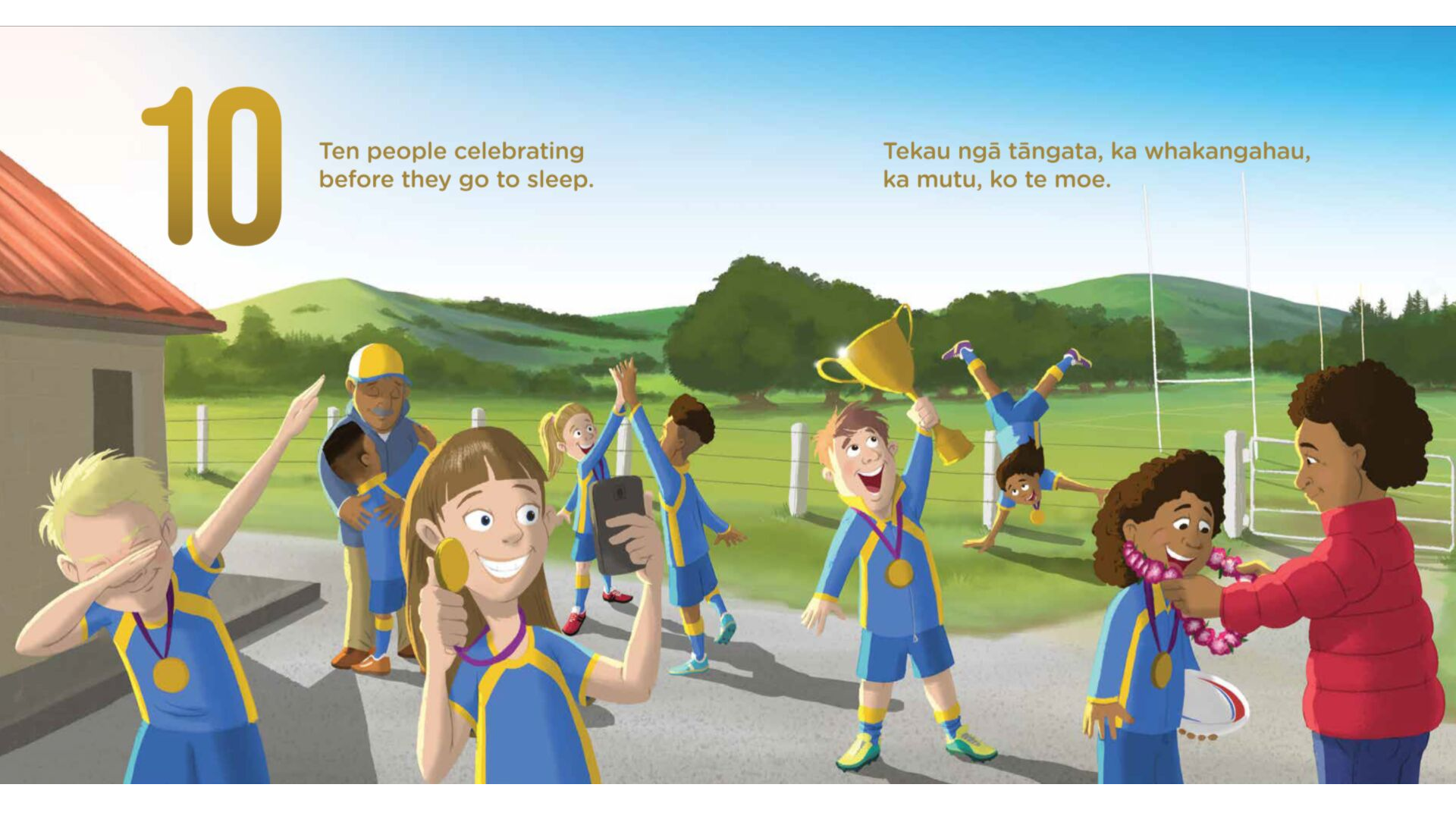
Inclusive images are just one part of the progress we need to keep making in New Zealand publishing. As Lani Wendt Young said in her incendiary New Zealand Book Council lecture last month, Māori and Pasifika kids need to read stories – lots of them – about their lives, and for that, we need more Māori and Pasifika storytellers to have their work published.
Is that you? Are you the writer or publisher who can add to the range of stories appearing on our kids’ bookshelves?
It might take two years or more, so start now, eh?
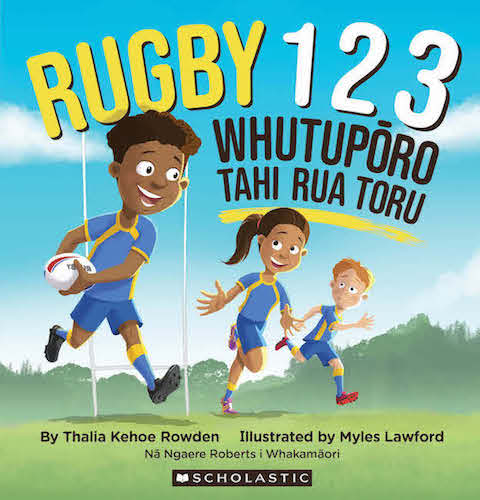
Rugby 1 2 3 / Whutuporo tahi rua toru
By Thalia Kehoe Rowden
Illustrated by Myles Lawford
Translated into Māori by Ngaere Roberts
Published by Scholastic NZ
RRP: $17.99

Thalia Kehoe Rowden
Thalia Kehoe Rowden is a former co-editor of The Sapling, and a Wellington writer and human rights worker. She is passing on a family inheritance of book dependency to her two small children, and is delighted to be part of The Sapling, as it gives her even more excuses to read excellent children's books. You can follow her on Twitter, Facebook, and at her parenting, spirituality and social justice website, Sacraparental.



